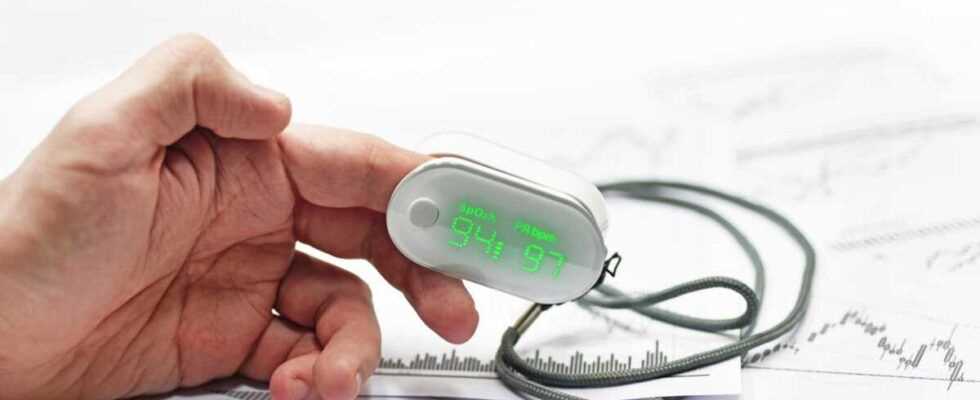As we know, in case of coronavirus infection, shortness of breath or difficulty in breathing are a sign of worsening of the disease to be taken very seriously. Since the start of the pandemic, sales of devices to measure the amount of oxygen in the blood have jumped. This small object which pinches the fingertip for a few seconds makes it possible to detect a drop in blood oxygenation, also called hypoxemia. Like the blood pressure monitor, it can be used for home monitoring by patients with respiratory problems or suffering from respiratory system disorders. From there to go to the pharmacy or on the Internet to equip yourself at home, no!
The Haute Autorité de Santé has updated its recommendations to general practitioners for monitoring patients with Covid-19, in particular concerning the use of an oximeter at home. In the event of a coronavirus infection, the patient should approach their GP who will measure the pulsed oxygen saturation on the finger and determine whether they need to use a home oximeter for this follow-up. The following are concerned by this reinforced surveillance: patients over 65 years of age, people with risk factors for developing a serious form of the disease or presenting respiratory signs.
To carry out this self-monitoring, the patient is trained by the pharmacist or the general practitioner in the use of this medical device. The results of the measurements (usually three per day) are to be noted in a logbook, as well as any symptoms. Any significant decrease should be reported. Finally, the patient is seen for a follow-up medical consultation six to twelve days after the onset of symptoms or the positive test. Saturation monitoring for these at-risk patients is lifted fourteen days after the onset of symptoms if the outcome is favorable.
How to take your pulse without a device?
We know that after 65 years pulse too slow, too fast and / or irregular is not a good sign and increases the risk of cardiovascular disease. For this gesture to be effective, it is advisable to use two fingers, generally the index and middle fingers, which are applied to the carotid artery (at the level of the neck) or to the radial artery, located on the face. internal wrist. Two important points to watch out for:
• the rhythm: whether it is regular or not. Arrhythmia should be reported to your doctor.
• The frequency: it should not be less than 40 beats per minute, nor more than 120 beats per minute (which can mean atrial fibrillation).
Read also :
⋙ Taking your pulse can save your life!
⋙ Calming heart palpitations: the solutions
⋙ Lungs: give them a second wind
